Nose surgery examples
Click into the middle of the circle and move the slider from the left to the right.
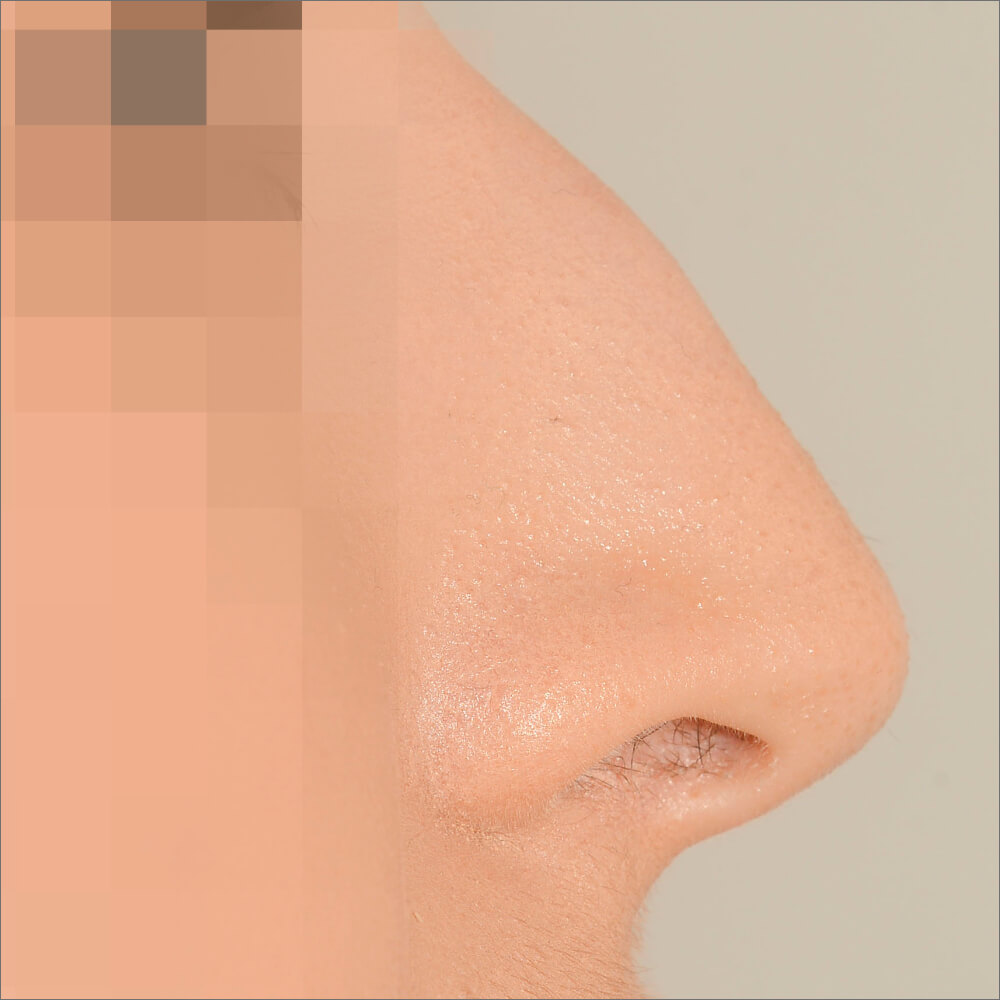

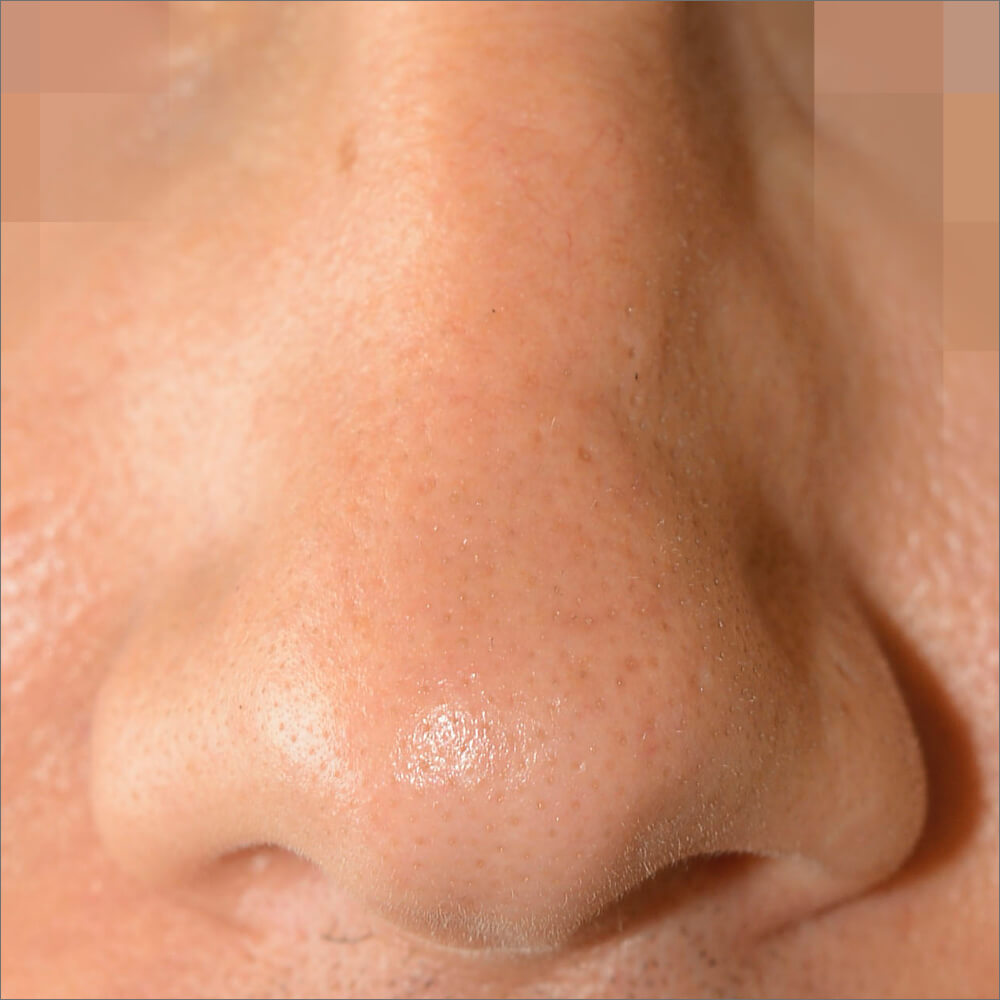


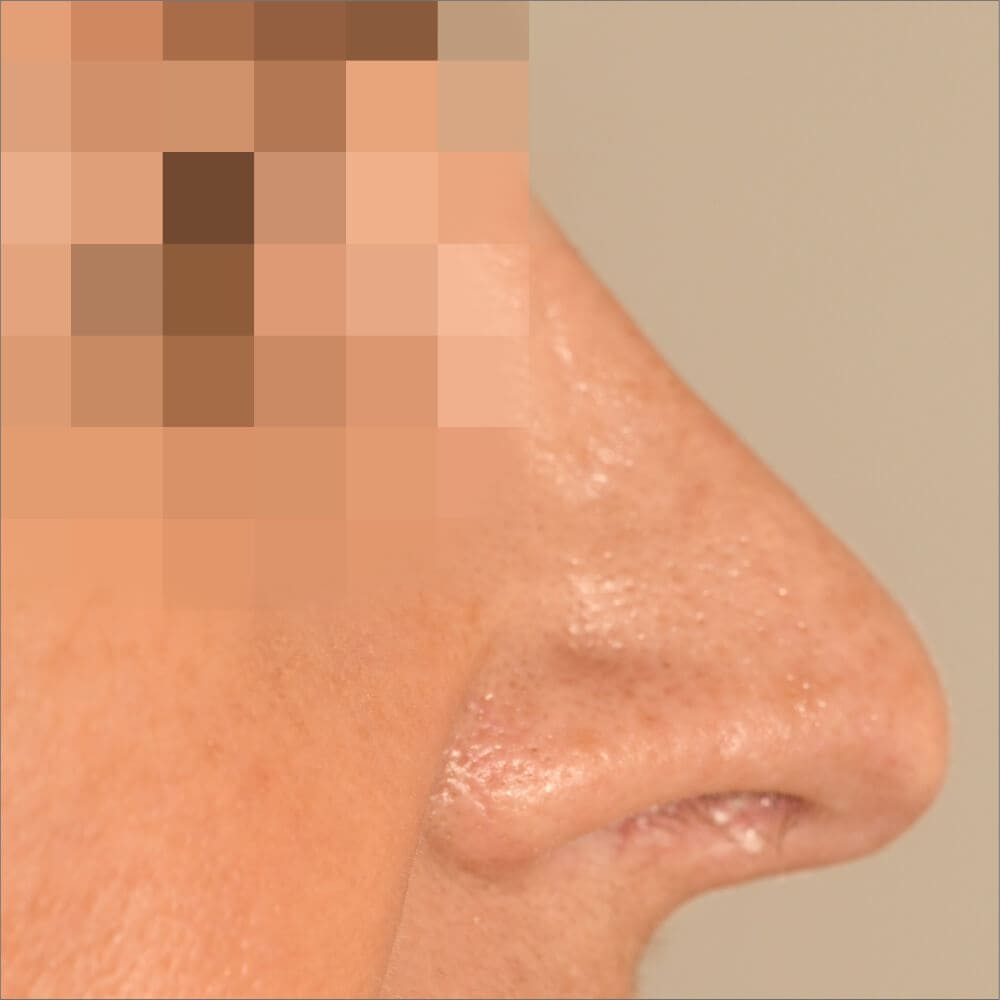
Cosmetic rhinoplasty is by far the most demanding operation in the field of aesthetic plastic surgery. The characteristics of four different types of tissue (skin, mucosa, cartilage, bone) must be taken into consideration with this operation. Moreover, in addition to the aesthetic correction, breathing must also be taken into account.

The job of a reputable plastic surgeon is not to reshape the nose of the patients seeking advice, in accordance with prescribed standards, but instead seeking to harmonize unfavorable conditions.
The most important progress in rhinoplasty in recent years is, in my view, how the principle changes in the shape of the nasal cartilage are to be performed. Shaping should not be achieved by incision or partial removal but through the use of molding seams and by inserting stabilizing cartilage grafts, so called “struts”.
There are three surgical approaches: closed, half-open, open.
Each method has its specific indication and pros and cons. For best results, nose surgeons should master all three methods.


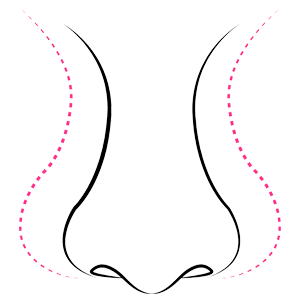
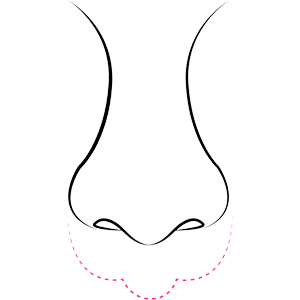
The most common corrective actions relate to the hump, the tip of the nose and the length of the nose.
During the removal of a nose hump, the nasal pyramid is opened, and there is almost always an “open roof”. Hereby, an important part of the suspension mechanism of the nasal pyramid is removed, which often leads, after years, to an unpleasant und unsightly collapse of the middle third of the nose (“inverted V-deformity”, “collapse of the middle vault”). Tailored cartilage grafts (“spreader grafts”) can prevent this problem.
The shaping of the nose is a particularly demanding part of the nose correction, and requires great experience. The tip should represent the highest point of the nose and show two symmetrical, the light refracting vertices. To model the nose, shaping seams can be applied or pieces of cartilage can be introduced. The extent of the correction must be co-ordinated with the skin thickness.
The length of the nose, in combination with the inclination angle of the bridge determines the aesthetically particular important nasolabial angle. With a too blunt nasolabial angle, the nose is too short (snubbed), with an acute nasolabial angle, the nose is too long (drooping). The shortening of the bridge is relatively simple, an extension is more difficult.
Besides the nose, the chin plays a crucial role in the harmonization of the face. Ideally the foremost point of the forehead and the chin form one level. The correction of a receding/protruding chin can remarkably improve the result of an aesthetic rhinoplasty. Mostly the length deficit or the surplus is so small that orthognathic measures of the jaw are not necessary and it is possible to correct the chin using minor surgical procedures. It is amazing that the importance of the chin for the face harmony is completely unknown to most patients.
In no other intervention of cosmetic plastic surgery such detailed advice and accurate planning is crucial.
For this reason, we make a digital photo of the nose and discuss with the patient desired changes using a morphing program. This way the desired outcome and the technial possibility can be matched, thereby avoiding unrealistic expectations and unpleasant surprises.
The first consultation takes up to 30 minutes and costs EUR 180. For consultations lasting longer than 30 minutes EUR 250 will be charged. All other consultations are free of charge.
If you purchase the Enzyklopaedia Aesthetica book “Nasen- und Kinnkorrektur” (Rhinoplasty) ( EUR 34.90 ) the first consultation is free of charge! You can purchase the book during your first visit in the ordination or order it online.
Surgical preparation for performing the procedure under local anesthesia
For public health reasons, a blood test (so-called “small laboratory blood”) is necessary, including HIV and hepatitis A, B, C. If you are insured in Austria and the procedure is medically indicated, there are no additional costs.
Surgical preparation for performing the operation under general anesthesia
The surgical preparation includes a blood test (so-called “complete blood count”), chest X-ray, mammography, ultrasound and a surgical release by a general practitioner or internist. If you are insured in Austria and the procedure is medically indicated, there is no additional cost. The same applies to the OP-release by an internist or general practitioner, who holds a contract with the usual social security institutions in Austria. When you choose your own doctor the insurance will cover about 50% of the cost.
Hospitalization – inpatient (overnight)
EUR 1.350 – 3.500, – depending on duration of operation, number of nights, room type (suite, single, triple) and hospital.
In general, the procedure is performed under general anesthesia therefore an anesthesiologist is needed for surgery. The cost of anesthesia varies depending on the duration of the operation and is between EUR 500 – 1.200. An average cost of EUR 600-800 is to be expected.
Depending on complexity and method deployed is the surgical fee of between EUR 2.000-8.000, – on average, must – be expected to be EUR 3.500-4.500.
Visits
Visits are included in the surgical fee.
Check-ups
Check-ups are included in the surgical fee.
Arrange your appointment now
I am looking forward to your visit!
Dr. Turkof
The growth of the facial skeleton is mostly completed at 18 therefore it should be avoided before then.
Much can be corrected. The most common corrections concern: the saddle, the procetion (length from the base to the tip), the shape of the bridge, the root of the nose (radix), the size of the nostrils, the angle between upper lip and nasal tip, the width of the nose etc.
The planning of a nose operation consists of two stages. First, the request from the patient is recorded and then the proposed changes are simulated in a computer program. In this way the surgeon can judge whether the ideas of the patients are medically justifiable and aesthetically meaningful. Not infrequently the patient, after the simulation, realizes that the nose he wishes would not suit his face and he opts for another one that was conceived together with the surgeon.
A congenital defect or an accident can cause deformities of the nose; this would be considered a medical indication for the correction. The same is true for all congenital and acquired changes in the nose that lead to an impairment of nasal breathing.
If there is a medical indication, the health insurance companies cover the costs for the operation.
There are three surgical approaches: closed, half-open, open. Each method has its specific indication, and advantages and disadvantages. Therefore, any good nose surgeon should be proficient in all three methods.
When using the closed or semi-open method, the scars remain within the mucous membranes inside the nose. With the open method there is a barely visible, 2-3mm long scar at half height of the nose bridge.
If the intervention is limited to the correction of soft tissue, local anesthesia can be used. If in the procedure the bone is involved, general anesthesia must be used.
Medical complications include mainly bleeding and breathing difficulties. Much more frequently, the following aesthetic complications can occur: too much/too little worn hump; crooked nose; disharmonious bridge, bulbous nose tip and much more. Reparative surgery after unsuccessful rhinoplasty is often possible but requires great experience in the field of aesthetic nasal surgery.
Depending on the extent of surgery, one or two nights in the hospital should be expected.
Depending on the extent of the surgery, the traces of the operation (swelling, bruising, etc.) you will be back to normal about two weeks after the operation.
The length of the chin plays a crucial role in the harmonious picture of the face. Ideally, the most anterior point of the forehead and chin make a plane. Deviations can often be corrected without extensive orthognathic measures.
A nose correction should in principle be carried out in an ISO-certified operating room of a hospital.
For a period of 14 days before the operation, anticoagulants (aspirin, Marcoumar, vitamin E, etc.) should be avoided as this can delay blood clotting. Also alcohol and sleeping pills should be avoided as far as possible, because they reduce the coagulating ability of the blood and thus increase the risk of bleeding. The consumption of cigarettes should be reduced to a minimum as much as possible. Nicotine has a vasoconstrictive effect, which can lead to impaired wound healing.
For surgery under general anesthesia, the following additional tests are needed and, if necessary, special assessment of respiration by an ENT doctor:
Please note that the results may not be over 10 days old at the time of surgery. Please bring the X-ray and all the findings for surgery.
Please come 2.5 hours before the procedure to the hospital on the day of the surgery and sign in with the porter. After completing the admission formalities you will be placed in your room. On request, you will receive an infusion, which reduces your thirst.
For a rhinoplasty, an inpatient hospital stay between one to three nights should be expected.

Mon – Thu 9:00am – 7:00pm
Fri 9:00am – 3:00pm
Tel: +43 1 587 00 00
E-Mail: dr.edvin@turkof.com
